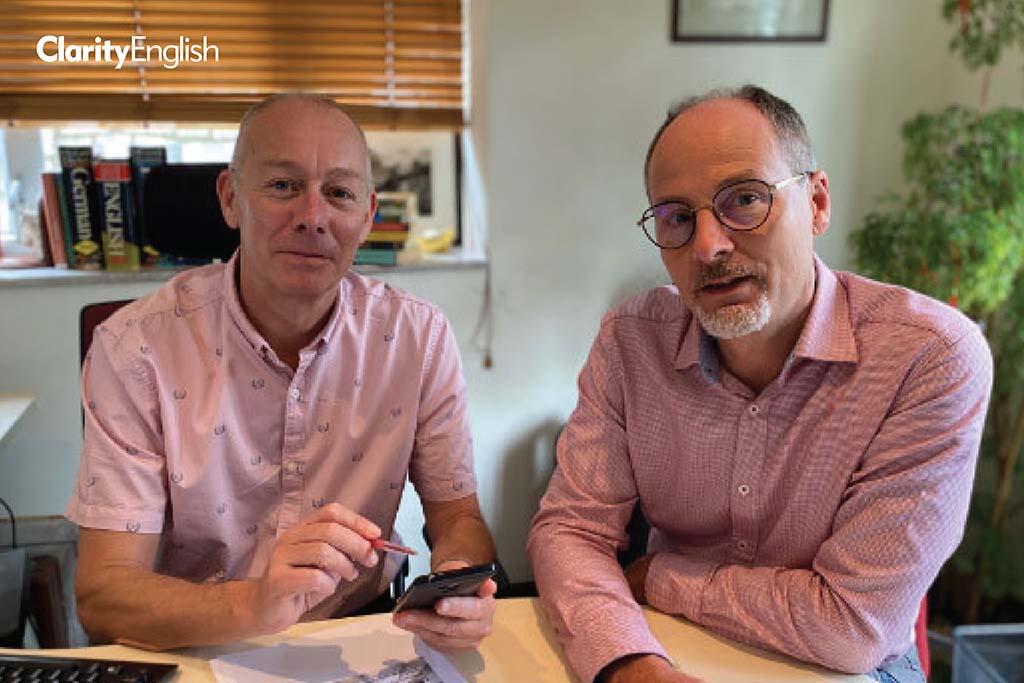Dr Adrian Raper (right), Technical Director sitting next to Andrew Stokes, Managing Director at ClarityEnglish
In this month’s IATEFL TEASIG (Testing, Evaluation and Assessment Special Interest Group) publication, Dr Adrian Raper, Technical Director at ClarityEnglish, talks about entering the field of testing and his experience of developing an online placement test.
Where are you based?
I work in Hong Kong for ClarityEnglish. We develop online ELT resources, including the Dynamic Placement Test, which we co-publish with telc – Language Tests in Frankfurt.
How long have you been there? / Which other countries have you worked in?
I’ve been here for 25 years, so longer than anywhere else. Before then I worked in Malaysia and Canada.
How long have you been a member of IATEFL?
We started attending IATEFL conferences about 20 years ago, I think. The book launches were somewhat more glamorous then – taking over all of Brighton pier!
Why did you choose TEASIG as your SIG?
A few years ago, we started working on developing a test and it quickly became clear that there were very good connections to be made from TEASIG. I’m a total beginner in some areas of testing and know quite a bit in others – so TEASIG helps me talk to people where both parties are gaining.
What sort of work do you do?
Most of my work is overseeing the technical development of software for delivering teaching and testing materials. About half of it I would describe as support when I am talking to real teachers and testers. That is the good bit.
How much of your work time is spent on testing, evaluation and assessment?
About half – it is a growing area for our company.
Do you see yourself as more of a teacher or as more of a tester?
A tester, someone who provides services to teachers.
Do you work in a team or alone?
Very much in a team, just the perfect size to get lots done whilst keeping it simple and fun.
Can you use the same set of skills and principles in several different contexts?
In software terms, you think about the program in very different ways. You are looking at an admin tool that must be easy to use or a test delivery program that has to be so robust — it is going to work on thousands of devices at the same time in a university hall with no wi-fi. We have a whole host of stress, load and requirement tests that you have to run every time you change anything. But underlying all of it are the same software development principles.
Have you spoken at conferences on testing issues?
This is something I look forward to resuming! We’ve done lots of Zoom webinars recently, and it is nowhere near as much fun as being on a stage. Mind you, you can reach a lot more people this way…

